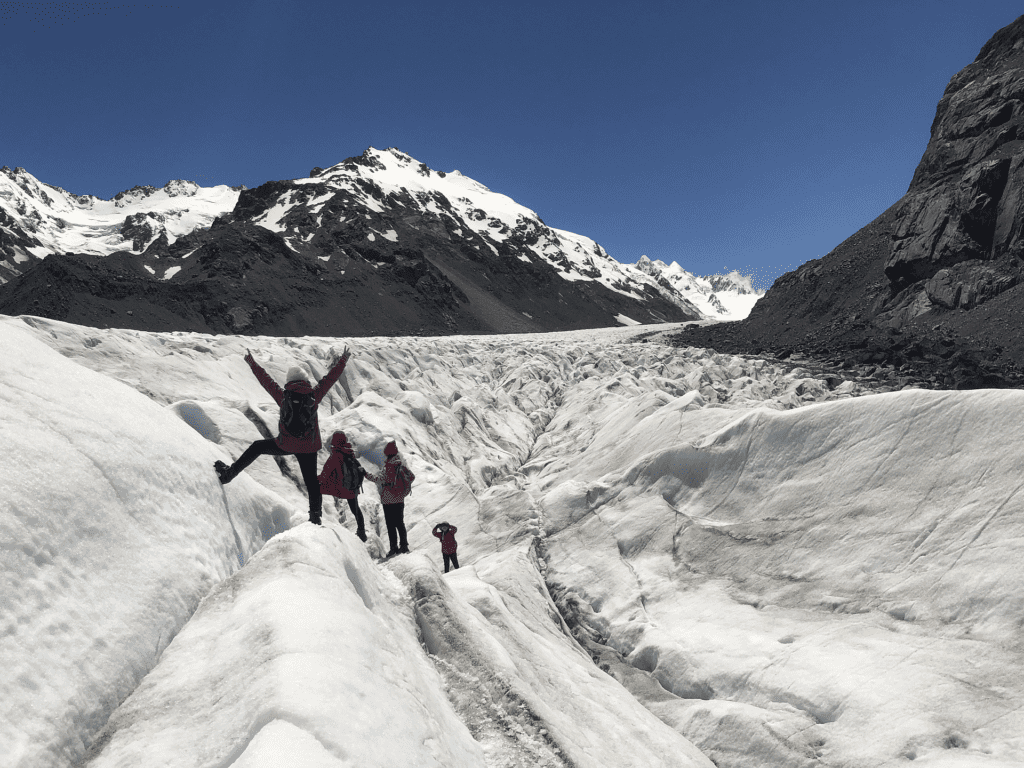The Tasman Glacier is an impressive, expansive ice formation that runs down the Eastern side of Mount Cook. At 23.5km in length it’s New Zealand’s longest glacier, running south east down the Southern Alps towards the Mackenzie Basin. Because of its position on the Eastern side of the Alps, the Tasman Glacier is thought to experience more pleasant weather than it’s Western neighbours. This means more sunshine hours, less wind and more opportunities for epic heli-skiing, glacier hikes and scenic flights.
The scenes on the Tasman Glacier are jaw-droppingly magnificent and incredibly varied: huge expanses of textured fluted ice, tiny winding streams and deep vertical caves cover the icy landscape. The top of the glacier’s surface is dense and smooth, and as you move toward the bottom of the glacier, the surface becomes more rocky until you reach the iceberg-littered terminal lake.
The Tasman Glacier’s unique geology makes it ideal for a heli-hike. After landing in the glacier’s upper reaches at 1,200 metres above sea level, you’ll make your way across the landscape, exploring the many canyons and caves that lie beneath the commanding peaks of the Southern Alps. And if youre a skiier or a snowboarder looking for somewhere new to explore, the glacier has long runs from multiple landing sites.
The Tasman Glacier is thought to be over 18,000 years old but unfortunately it is unlikely to get too much older. Since the 1990s, increased temperatures have caused the glacier to melt rapidly. Over a period of 35 years the glacier went from having no terminal lake to having one seven kilometres long and 250 metres deep – reflecting the speed of the glacier’s decline.
With the glacier currently retreating hundreds of metres each year, scientists predict that in 20 years time the glacier will have disappeared completely and the terminal lake will reach its maximum size. This means there’s no time like the present to experience the Tasman Glacier in all its glory, creating memories to share with future generations.





